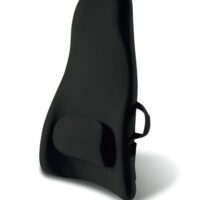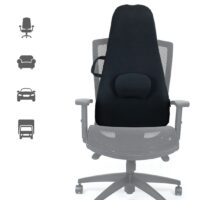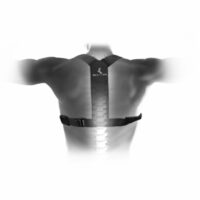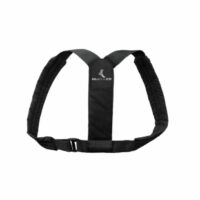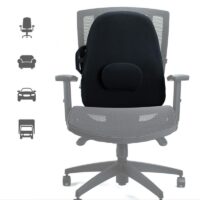Costochondritis
Article by Alex Clarke

Comprehensive Guide to Costochondritis: Symptoms, Causes, and Treatment
What is Costochondritis?
Costochondritis is an inflammation of the cartilage connecting the ribs to the sternum. It causes chest pain, often mistaken for a heart attack, but it is not life-threatening. The condition is generally self-limiting and usually resolves on its own.
Costochondritis, often known as Tietze Syndrome, is an inflammatory condition that primarily affects the cartilage connecting the ribs and the sternum. This condition may manifest as chest pain, which should never be ignored due to its potential severity, possibly indicating critical conditions like a heart attack.

Recognising the Signs
Chest discomfort in costochondritis is often sharp and worsens with activities that move the ribs, such as bending, twisting, or even deep breathing. The pain is typically localised, allowing you to pinpoint exactly where it hurts. You may notice increased tenderness or tightness in the pectoral muscles, as these muscles tense to protect the affected area.
Activities might initially ease the pain, but excessive movements can exacerbate the symptoms. Similarly, you might feel tightness or pain in your back where the ribs meet the spine.
Potential Causes
Costochondritis usually arises from overusing the chest area, but it can also follow direct impacts or prolonged activities like swimming, surfing, or even repetitive tasks such as gardening.
How Physiotherapy Can Assist
Physiotherapists play a crucial role in managing costochondritis. At PhysioWorks, our physiotherapists start by diagnosing the condition, followed by alleviating pain through gentle manual therapies, tailored exercise programs, and advice on activity modification. We also collaborate with GPs or pharmacists to manage pain and inflammation effectively.
As your condition improves, we focus on safely reintegrating you into your usual sports or activities, ensuring a safe and effective recovery.
What to Do?
If you suspect costochondritis, it’s essential to seek professional advice from a physiotherapist. Early assessment and treatment can prevent complications and hasten recovery.
For a personalised assessment and professional care plan, book an appointment at PhysioWorks today.
Rochedale - Call 38410277
Book Online: RochedaleSalisbury - Call 32751044
Book Online: SalisburySandgate - Call 32691122
Book Online: SandgateFAQ Section on Costochondritis
How long does Costochondritis last?
The duration of costochondritis varies. Many individuals experience relief within a few days to a few weeks, although it can sometimes last for several months. Chronic cases are less common but may persist longer without proper management.
Is Costochondritis hereditary?
There is currently no clear evidence to suggest that costochondritis is hereditary. While inflammation-related conditions can have genetic components, costochondritis is typically associated with physical strain or injury.
Can RA (Rheumatoid Arthritis) cause Costochondritis?
Rheumatoid Arthritis (RA) is characterized by joint inflammation and could potentially exacerbate conditions like costochondritis due to the inflammatory processes involved. However, costochondritis itself is not directly caused by RA.
How is Costochondritis treated?
Treatment for costochondritis mainly focuses on pain relief and managing inflammation. Common approaches include rest, heat or cold application, and over-the-counter pain medications like NSAIDs. In more persistent cases, physical therapy or corticosteroid injections may be recommended.
What are the main differences between Costochondritis and Tietze’s Syndrome?
While both conditions involve inflammation of the chest cartilage, Tietze’s Syndrome is less common and often includes swelling, which is not typically seen in costochondritis. Tietze’s Syndrome tends to affect younger individuals under 40, whereas costochondritis is more common in adults over 40.
For more detailed information and guidance, consulting with a healthcare provider is always recommended. They can provide a diagnosis and tailor a treatment plan suited to individual needs.
Related Articles
- Physiotherapy for Rib Pain – Explore how physiotherapy can manage rib pain, which is closely related to costochondritis symptoms.
- Sports Physiotherapy – Learn about tailored sports physiotherapy options which can be crucial for athletes recovering from chest injuries similar to costochondritis.
- Chest Pain: When to See a Physiotherapist or Doctor – Discover the critical times when chest pain requires professional physiotherapy evaluation.
- Managing Acute Sports Injuries – Insights into immediate care for sports injuries, relevant for preventing conditions like costochondritis.
- Respiratory Physiotherapy – Find out how physiotherapy can aid respiratory functions, beneficial for patients experiencing chest pain from costochondritis.
- Posture Correction – Understand the importance of correct posture in preventing chest and rib pain, relevant to costochondritis sufferers.
- Acupuncture for Pain Management – Read about how acupuncture can relieve pain, potentially beneficial for managing the pain associated with costochondritis.
- Injury Prevention Tips – Tips on avoiding common injuries, including advice that could help prevent exacerbation of costochondritis.
- Common Causes of Chest Pain – This article discusses various causes of chest pain, offering a broader context to costochondritis.
- Treatment Options for Pain – Explore different treatments available for managing pain, useful for those dealing with the discomfort of costochondritis.



